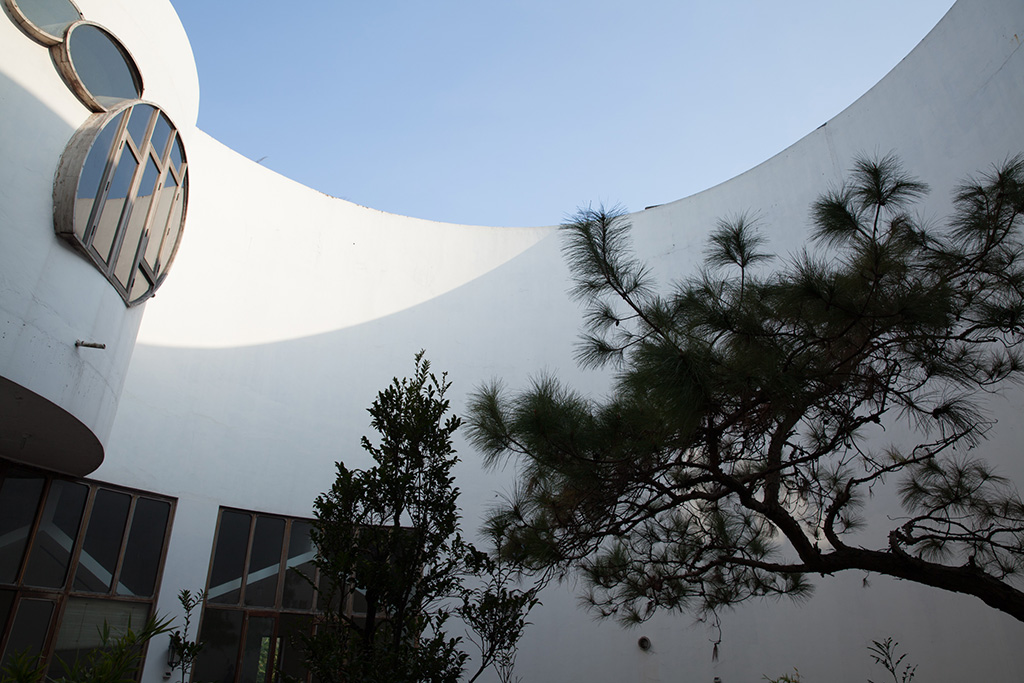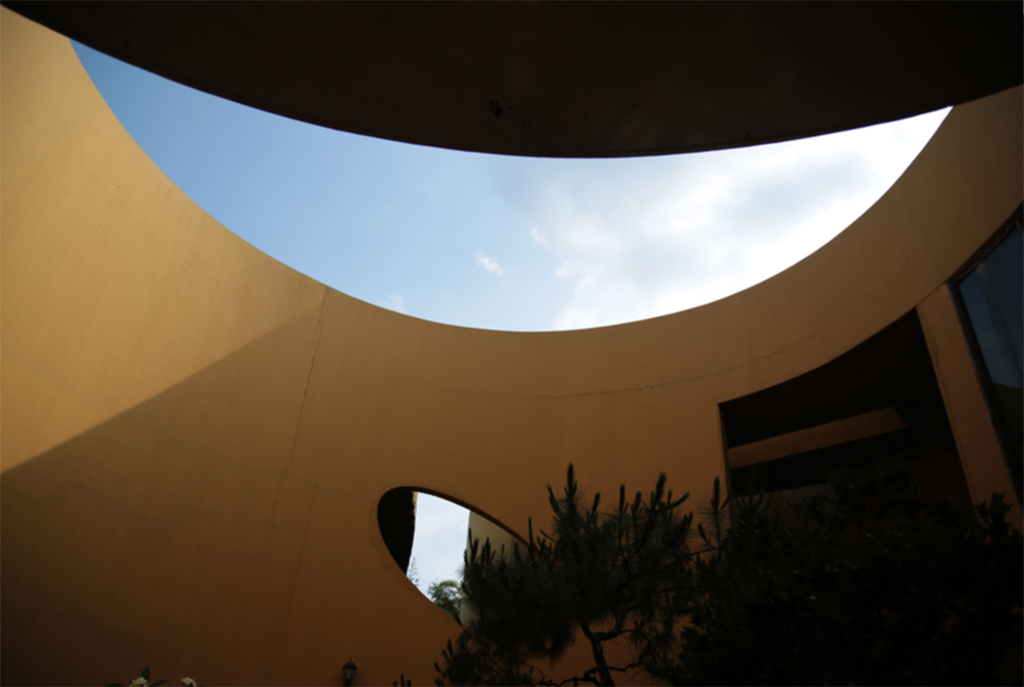From The Age of Empire to Liao Garden
In the year 2000, Zheng Guogu encountered 5000 m² of land in the suburb of his hometown Yangjiang, and by 2005 when he started the construction of The Age of Empire , it had further expanded to more than 20000 m² . In the years that followed, the piece of land that was called The Age of Empire had been continually expanding. He dug canals and built mountains, planted trees and houses, just like playing the computer game “Age of Empires”, but the “Empire” in reality incorporates more complicated spatial forms and social relations, it’s not just a site-specific, spectacular work, but a project that has extended into real life situations, including the entire process from the conception to the execution of the space and its sustenance in real life. From 2013 onward, he changed the name from The Age of Empire to Liao Garden. Despite the name change, Liao Garden will continue upon the un nished journey set out by its predecessor with new connotations of energetics. The conversations between Hu Fang and Zheng Guogu on the The Age of Empire and Liao Garden below took place in 2006 and 2014 respectively.
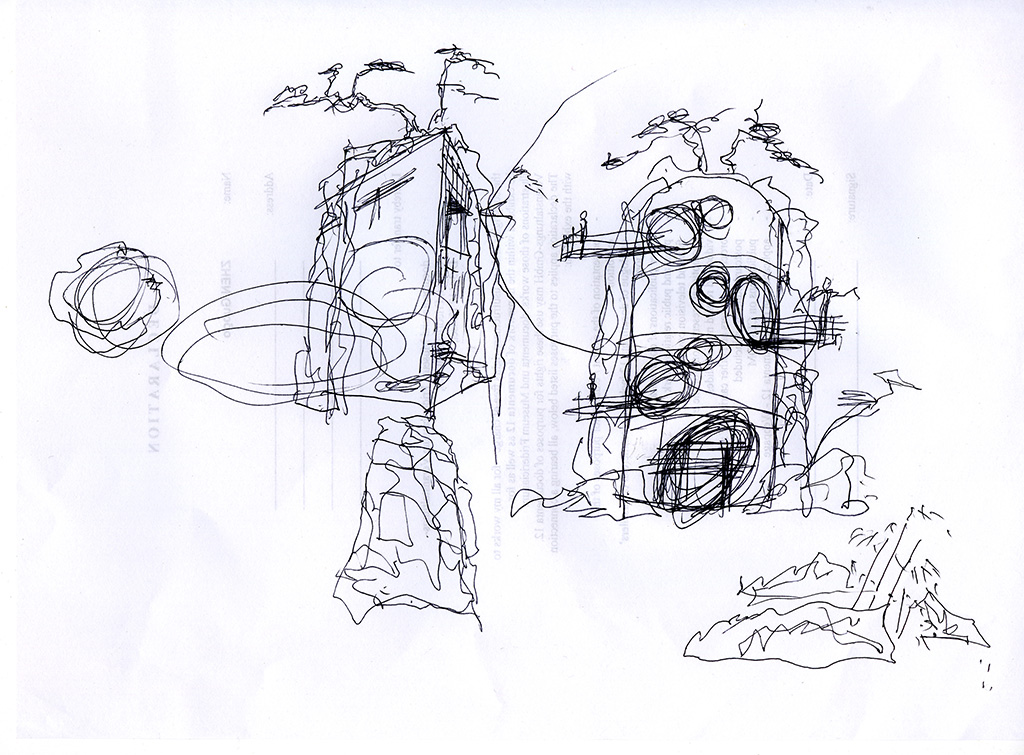
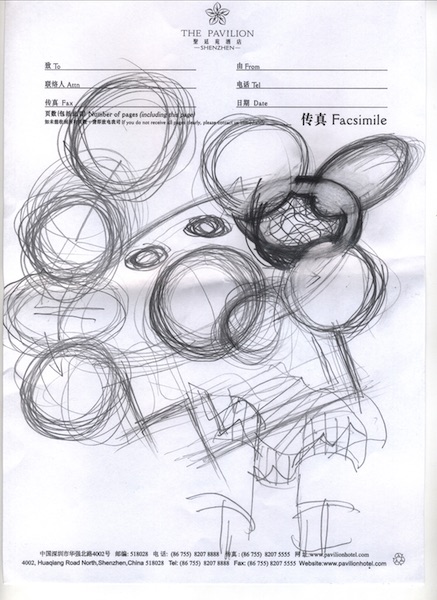
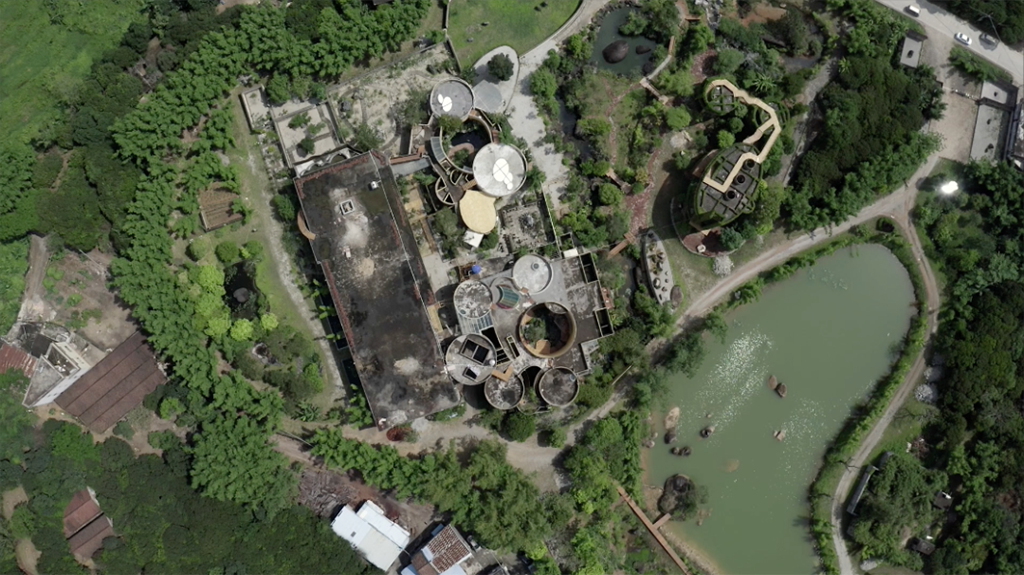
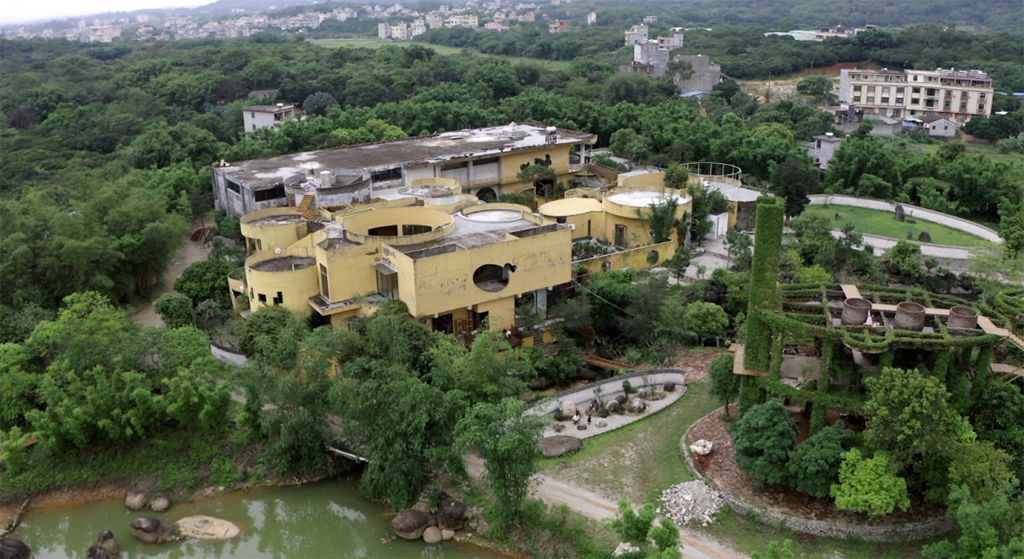
At the very beginning, Zheng Guogu would sketch out his imaginations of The Age of Empire at home, during journeys, in hotel rooms. These scattered pieces of drawings will slowly form the spatial relations of the whole in a later process.
Courtesy the Artist and Vitamin Creative Space.
Part I: The predecessor of Liao Garden
HF (Hu Fang): From the illegitimate condos of the Seven Condos (2001-2003) to The Age of Empire , it seems that you have been searching in the real world for a channel to transform your energy.
ZGG (Zheng Guogu): In the “Empire”, I think the question of architecture remains a personal one. My own secret channel can only be opened up in the process of construction. Perhaps I have to build a mountain in order for me to know what can grow out of the mountain.
HF: To do is very di erent from not to do.
ZGG: I agree. From minor transgressions to buildings in this scale, it’s a class struggle against all these government departments in Yangjiang and I nally talked them around. I nd it rather interesting, like ghting a guerrilla war.
HF: The Age of Empire not only mirrors a macrocosmic socio-political space in the reality, it also incorporates many elements from your personal experiences, like the pillars in the studio recall your memory of the demolished Yangjiang People’s Assembly Hall.
ZGG: The pillars don’t have to look like that, however, once they took shape, the memory will linger. Even though the building disappeared in reality, some of its fragments reappear in my place.
The Age of Empire,2008 / 2009.
HF: I remember “Age of Empires” is a computer game, you used to be obsessed with it.
ZGG: The “Wonder” I built in The Age of Empire is different from that in the computer game “Age of Empires”. I built a “Wonder” according to my needs, but the “Wonder” in the game has a set formula.
HF: What’s the “Wonder” in the game?
ZGG: The “Wonder” in the game has no meaning, it’s just an indication. When it comes to a certain time, it can be regarded as a display of culture, wealth and prosperity of the country. Every country has its “Wonder,” the Chinese “Wonder” in the game is the Temple of Heaven. The “Wonder” in my “Empire” is similar to that in the computer game, it’s a place to invest money and labor, but I combine it with the function of a small museum. The idea came rst, but I have no clue how to use it. Let’s build it and see what happens.
HF: Compared with a virtual space, building a space in the reality is surely a longer process.
ZGG: The building of the “Empire” is driven by my fascination with the game as well as the architectural questions that I wish to solve, it also happened in a world of game. However, different from the computer game, virtuality is a form of play, there’s no pressure in it, you just stay up all night for it and then crush into bed. But it’s much more complicated in real life, you have to deal with the pressure of reality. There’s always something new that’s going to happen in the process of my construction.
HF: The pressure from the real life is more exciting for you, so you treat life as a game.
ZGG: During the process, all the social interactions and the ways of operations between these administrative departments began to reveal themselves, or at least I started to know a little about all that. There are no such problems in the computer games, it’s all about how you play it well, and it doesn’t matter if you lose, die or cannot nd the gold mine, it might get better if you start over again.
HF: What interests me is your idea of “planting”
in the “Empire”, meaning that you are not satisfied with just one kind of spatial transformation, instead, you want to have a sort of spatial implant. In the Chinese context, this implantation will instantly bring out related social and cultural situations, endlessly fueling you the energy to create again.
ZGG: I want to change my Hukou to an agricultural household, or like a new intellectual going up to the mountains and down to the countryside (laugh). The “Empire” is an epoch that will disappear eventually, yet it has preserved all the marks from its transgression to legalization, these marks will always remain, there’s no question to that.
Part II: The present life of Liao Garden
HF: From The Age of Empire to Liao Garden, what sort of cosmic energy has caused this name change?
ZGG: If one indulges himself in this project long enough, he will find the problems that have arisen from it. Later I realised, all these problems might have been brought about by the shockwaves generated from its name within a specfic period of time. Once a sound is made through vibration, it turns into a wish, a wish that will lead you to the result carried by the sound. The game series “Age of Empires” has declined and been replaced by something new on the Internet, maybe they are more fun. I think this place should also have a new name, about which I have been thinking for a long time. One day, I discovered a hollowed garden called Liao Garden at the very core of The Age of Empire, which was an essential part of something that I wanted to build. If you link up the nuclei of the entire The Age of Empire, it will reveal its meaning of “being finished, done”, so I substituted the name of The Age of Empire with Liao Garden .
HF: About the “core” you mentioned, is it the core of the architecture, or the core of the idea?
ZGG: There’s a garden located right at the center of the compound. That place reminds me of yoga centers in India, one practices yoga there in a closed environment. They say energy can circulate inside that closed environment, but actually it was everybody’s energy that is accumulating and circulating there. I made it into a circular outdoor garden. After this place was built, it became a sort of place for inspirations, everyone who went there found themselves with new ideas. So I started to think the sort of energy coming from this place should be the core of the whole thing.
HF: So the core is actually a void?
ZGG: Yes, it’s a hollow garden.
Liao Garden, 2014/2016.
HF: Instead of being something solid, it’s a place that’s constituted by void.
ZGG: In such a void, you look up at the cloud, if we take a picture of it, it looks like a ball, or the earth. It’s strange, you think it’s void, but if you take a picture of something hollow, it becomes a rather solid ball.
HF: Last time we talked about the relationship between empty and tangible spaces. Liao Garden has been more oriented towards the space of energy, is it also related to the transition from semiotics to energetics?
ZGG: Surely it is, for example, there’s a formulation of energy in the words “Liao ( 了 )” and “Garden ( 园 )”. The invention of Chinese language started rst with the spirit, people got inspired to create characters, then there was logic. How many strokes are necessary (for a character)? How are its spatial qualities? There’s a spatiality in Chinese characters, like east and west, north and south, because it imitates the law of nature. At last, it took on a certain form. It’s a trinity. When a word is combined with other characters, a magnetic field is created. A paragraph or an article all have their magnetic fields, this way of putting words together is like jigsaw. Eventually, a symbol is defined according to its energy.
HF: Will it bring you a different way to build spaces? How do you think it will change the structure of the physical space?
ZGG: Liao Garden actually grows out of that hollow space in The Age of Empire. From that hollowed space, I began to understand what do magnetic fields mean to human, since everyone would react the same way there. I discovered the relationship between land and people in that place; looking upward, we will become aware of the relationship between the universe and men. For us, the first thing to do is to uncover the relationship between men and land. How can we fuse ourselves with the power of land and let it resonate with us? You would feel comfortable after sitting there for a while, slowly detecting the same frequency of the bodily resonance with the land.
Therefore, on that piece of land, I use my body to feel, I often crouch at the same place for a long time, sometimes even for days. In this continuous testing, there came a sudden enlightenment that the land possesses its own acupuncture points which are hidden in the energy core of the land, corresponding to our bodies. If the acupuncture points of land correspond to the acupuncture points of the human body, then there will be a resonance of the same frequency. If we find the correspondence between men and land, then it’s a simple version of the universe. There’s nothing in the universe but a frequency or a vibration. It’s a version where symbols don’t exist and everything is returned to energy, a formless power devoid of tangible phenomenons. I guess this is something more fundamental that the Liao Garden set out to capture.
HF: You once said that this project is your “personal architectural ideal”…
ZGG: I got a plot of land from the farmers in the suburb of Yangjiang, the city where I live. In 2005 I started the building of my own architectural ideal, and my ideal is to see everything as construct. This kind of construct fosters an artist to remain still like a farmer does while this stillness imprints the artist’s consciousness deeply into this plot of land, like a farmer’s seeds started rooting and growing in nature, from flowering to fruition, from simple to complicated dimensions, growing houses, ponds, rivers, garden landscapes, growing different mirror refections and spaces in a natural environment. The true construct is a world refracted from deep inside the heart, it shares the same frequency with nature, capable of contracting inwards as well as expanding outwards.
Farming and building equally require working outdoor, the building of landscapes is related to the seasons, it’s about seizing the right opportunity. When one sow a seed, a dimension, a relationship between the dimension and the space starts to form when it gets in contact with the soil. Every dimension is an existence, it’s also energy, energy is the vibration of frequency. The vibration of frequency is connected to arteries and veins. Using frequency to test the function of a space will give you most accurate results, it leads us onto the transition to energetics from semiotics. The functions of the spaces and the layout of Liao Garden were the outcome of me using my body as a testing tool. Whether or not a body feels comfortable in a built environment is to do with the interactions between human and the universe, this is a core idea in the Chinese ancient architecture. We can still feel a huge amount of energy even when we look at the ancient Chinese Gardens now, if we use our arteries and veins to match it and test it. As long as it’s at the same frequency with the universe, it will have a lasting “Qi”, the same with its “Yun” (luck, fortune or fate).
Liao Garden, 2017.
Text: Hu Fang
Text © 2020 the Author and The Pavilion
All works of art by Zheng Guogu © the Artist
Courtesy of the Artist and Vitamin Creative Space
